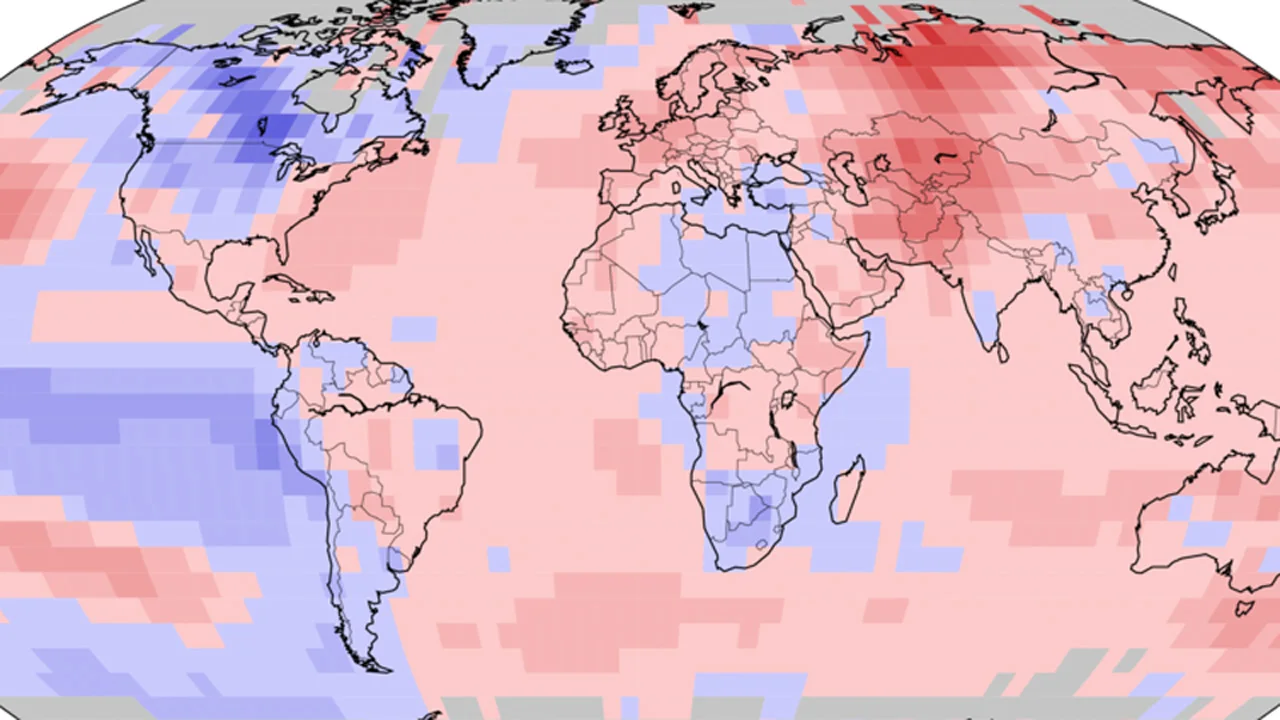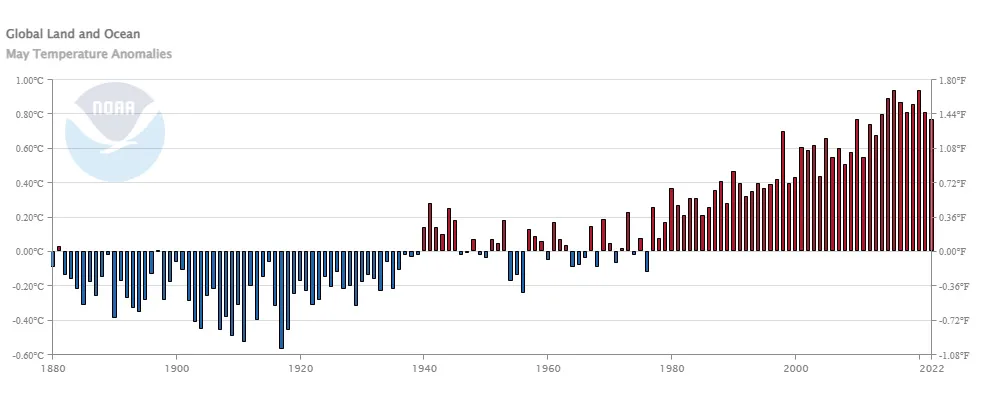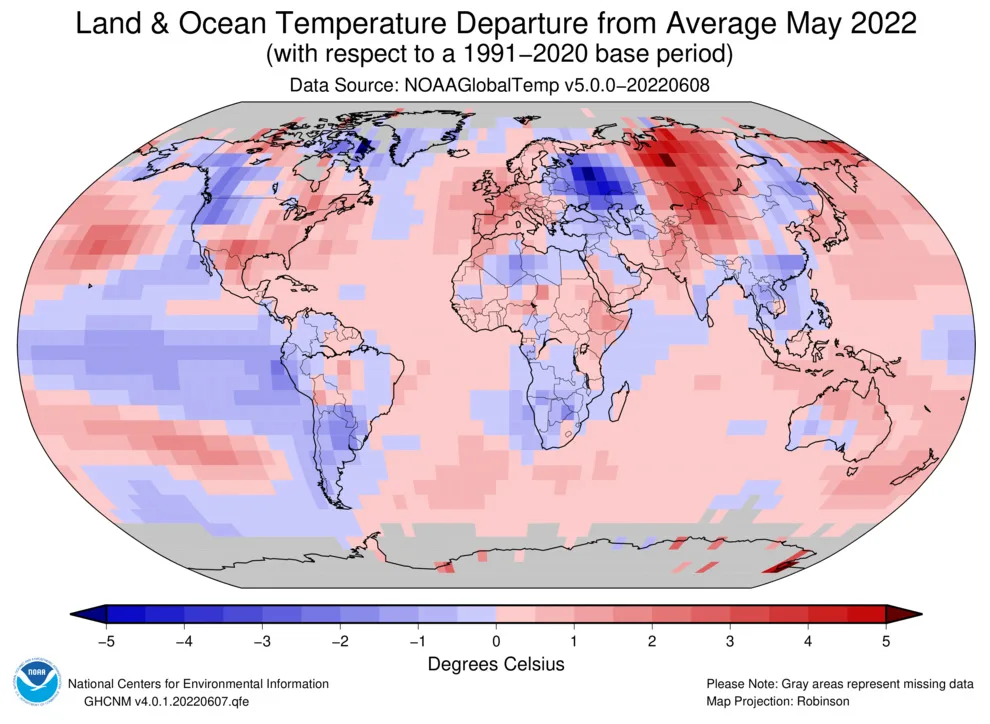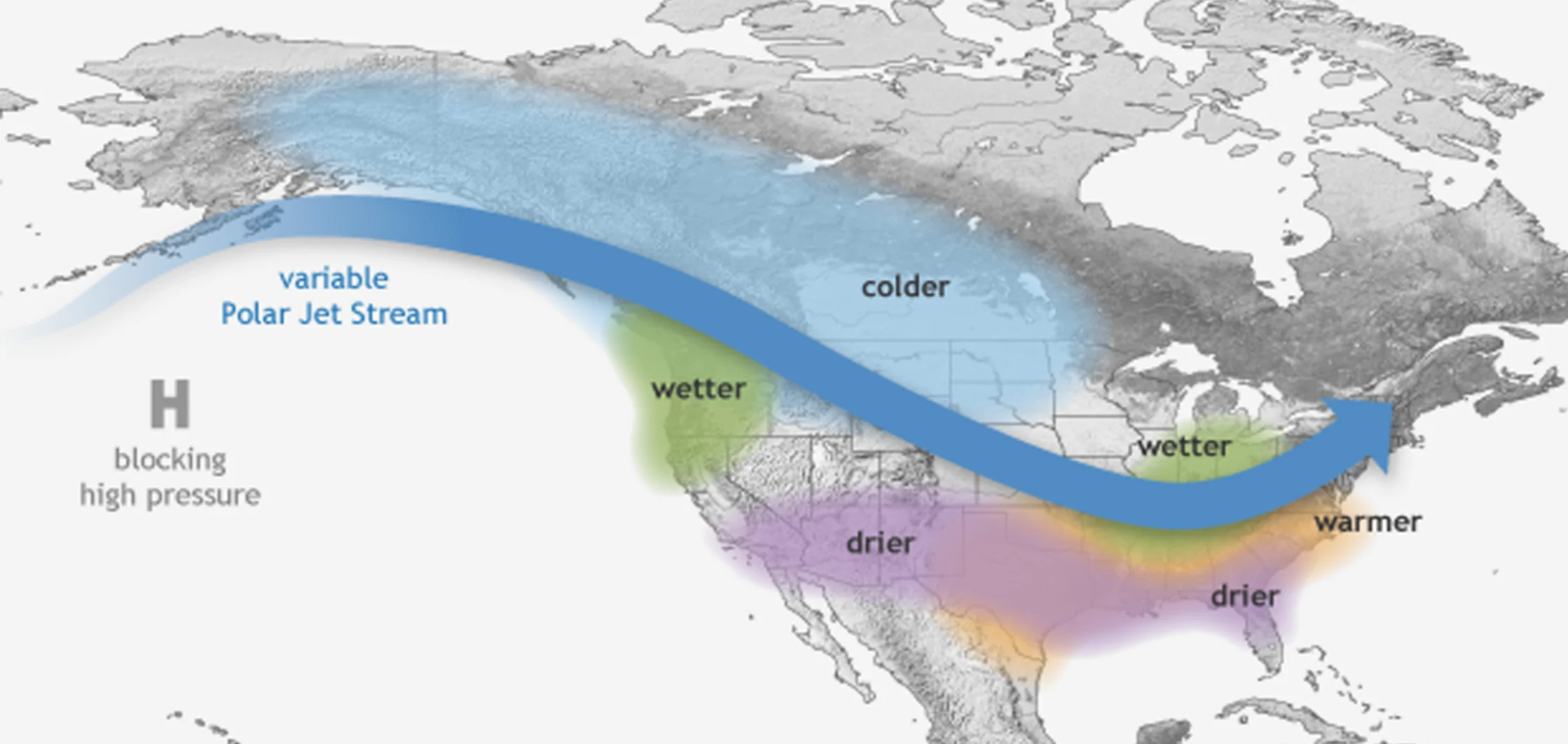
Canada is the coldest in years so far in 2022 thanks to a stubborn La Niña
While some regions of the world have been baking under extreme heat, Canada has been relatively cool so far in 2022, although that's not likely to last.
This past May is now ranked as one of the top ten warmest months of May in the past 143 years, and while extreme heat waves were felt in other parts of the world, a stubborn La Niña has kept Canadian temperatures lower in 2022.
According to the world's major climate agencies, last month ranked somewhere in the top ten of the hottest Mays in the record books.
In NOAA's latest global climate report, the month came in as the ninth warmest, at 0.77°C above the 20th-century average of 14.8°C.

Global average temperatures for each month of May, from 1880 to 2022, are plotted here. Although May 2022 is one of the coolest of the most recent years, it still ranks in the top 10. (NOAA NCEI)
"It was the coolest May since 2013, but it still marked the 46th consecutive May and the 449th consecutive month with temperatures, at least nominally, above the 20th-century average," NOAA stated in the report. "The ten warmest May months have all occurred from 2010 to present."
Meanwhile, the Japanese Meteorological Agency ranked May as the 8th warmest, according to NASA's tally, it was the 6th warmest (tied with 2018), and Europe's Copernicus Climate Change Service listed it as tied, with both 2018 and 2021, as the 5th warmest.

This graph ranks each global monthly average temperature against the average temperature for each month from 1980 to 2015, putting each into perspective for Earth’s seasonal cycles. According to NASA’s records, May 2022 ranked as tied for the sixth hottest month of May since 1880. (NASA GISS)
Although the month did not rank particularly high in anyone's books, several episodes of extreme heat were recorded around the world in May. Temperatures soared across India and Pakistan, where temperatures reached above 51°C, and central and southern Europe suffered under a record heat wave. The heat was felt across the southern and eastern United States as well, which even impacted southern Ontario in the final days of the month.
Despite all this, it was the cooling influence of La Niña that kept the overall global temperature from reaching higher during the month.
BLAME LA NINA
One of the major influencers in the climate system right now is La Niña, which manifests as colder-than-normal temperatures across the equatorial Pacific Ocean, coupled with a strong westerly flow of wind from South America to southeast Asia.

Global temperature anomalies for May 2022 reveal the relative cold and hot spots around the planet during the month. ‘Dipoles’ of cold and hot blanket North America and western Asia, with the wide swath of cool ocean surface attributed to La Niña evident across the equatorial Pacific Ocean. (NOAA NCEI)
This pattern generally has a cooling effect on the planet, as such a large area of cooler water surface absorbs an abundance of heat from the atmosphere.
The resulting shift in weather patterns has an especially strong influence across Canada and the United States.

This map shows the typical wintertime weather patterns during La Niña. (NOAA Climate.gov)
We are currently in the midst of a 'double-dip' La Niña. This pattern established itself starting back in September 2020 and persisted through 2021, before finally weakening slightly at the beginning of this year. Since then, it has re-strengthened and looks as though it will persist throughout the summer, at least.
According to the World Meteorological Organization (WMO), the latest assessments show some indication that it may even turn into a 'triple-dip' La Niña, which could stubbornly stick around into 2023. If so, it would be only the third time we've seen this occur in the past 72 years.
COOL CANADA
Based on NOAA's climate data, January through May of this year ranked as the 6th warmest Jan-May 'year-to-date' on record for the globe. This reflected that same pattern of hot spots, moderated by the influence of that cool ocean water across the equatorial Pacific.
However, specifically for North America, this five-month period was substantially cooler. It was only the 42nd warmest January-May seen in the past 112 years. With much of the cold concentrated over Canada, compared to normal, our country has been one of the coldest places on the planet in 2022 so far.

Year-to-date global temperatures across the planet are plotted on this map. Other than some cool areas over Africa, the coldest regions on the planet so far this year, relative to 'normal', have been across Canada, the northern United States, and southern/western South America. (NOAA NCEI)
The cooling due to La Niña isn't likely to last for Canada and the US, though. During northern summer, the influence of this pattern tends to shift away from North America, to affect weather patterns in other regions of the world instead. The only major impact left behind for us is a change in conditions across the Atlantic, which typically favours the development of more and potentially stronger hurricanes.
(Thumbnail courtesy NOAA NCEI)












